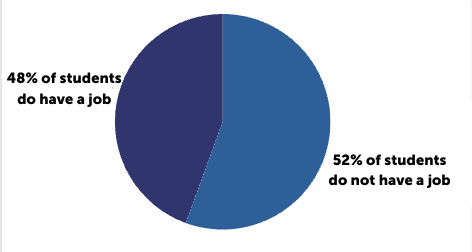Infamous Companies Exploit Child Labor for Their Own Benefit

Photo provided by Creative Commons
October 29, 2020
Renowned clothing and manufacturing industries are taking advantage of sweatshops run by child labor with billions of customers per day. Brands such as Nike, Amazon, Shein, Zaful, Urban Outfitters, Forever 21, and many others partake in running their businesses by employing overworked and underpaid manual workers. Often, these workers are children as young as five earning extremely low wages. They work between 10-16 hours per day in deplorable working conditions. While America may have stronger labor laws than most undeveloped countries, American consumers are benefitting from the use of foreign sweatshops.
Fashion brands often seek out the quickest and most inexpensive ways to produce clothing before current trends fade, which is known as “fast fashion.” Sweatshops satisfy these brands’ needs when it comes to efficiently manufacturing clothing at a rapid pace, therefore, lots of laborers are paid the bare minimum. The Learn Liberty organization explains that workers often have no choice but to work in these sweatshops because they are in dire need of income for their families. As for the children, The World Counts reports that companies favor employing them because they complain less and are more willing to accept lower wages. Also, children are faster workers and can do more delicate work because of their smaller hands.
Josephine Moulds, a former staff writer for The Guardian said, “Employers get away with it because the fashion supply chain is hugely complex, and it is hard for companies to control every stage of production. That makes it possible to employ children without big brands and consumers ever finding out.”
The environment is also at stake; fast fashion produces up to 10% of all carbon emissions, is the second-largest consumer of the world’s water supply, and pollutes the oceans with over 870 tons of microplastics annually. According to the Environmental Protection Agency, 15.1 million tons of textile clothing waste was produced in 2013 alone. In addition, it can take up to 2,700 liters of water to produce just one cotton t-shirt, and it was reported that the fashion industry had used nearly 79 million cubic meters of water in 2017 by the Global Fashion Agenda. The cheaper cost of fast fashion clothing, however, often appeals more to consumers, who tend to forget about the long-term effects it has on the environment.
These fast fashion brands continue to receive a large portion of their consumers mainly because the quality of their products are satisfactory in relation to the price. A t-shirt bought from Shein can be priced anywhere from two to thirty dollars, while t-shirts at a brand such as American Eagle, that doesn’t use child labor, can be priced around thirty to forty dollars on average. These inexpensive brands then gain popularity through word-of-mouth advertising because of the customers’ shared appreciation for the products’ high quality at a low cost.
Ty Lombardo, senior at Woodgrove High School, comments on why these brands continue to receive customers. “Many of them are good quality for the price you pay, and that’s one of the reasons people continue to go back to those companies. Unfortunately, that low price can often be attributed to low wages within the company in other countries.”
While a customer might prefer to buy from sustainable and high-quality brands, their clothing is oftentimes higher priced because these brands must compensate for not being able to produce as much. Senior Annie Zhang, a consumer of some of the brands in question, shares her experience with clothing affordability. “My parents don’t make enough for me to purchase ethically produced, high-quality clothing a lot of the time unless it’s a special occasion. I try my best to be sustainable when finding clothes that fit my needs, but ultimately, much of the world has passed capitalism into corporatism and profits are valued over people.”
Woodgrove High School sophomore Kyra Jones, shares what she believes is the most effective way to make a difference.“Petitions could be signed to shut that operation down, and we could boycott it so they wouldn’t have any sales.”
There are many measures and precautions that can be taken to help limit the amount of consumption from unsustainable industries. Whether it be raising awareness on social media, shopping at thrift stores, or researching what brands are ethical before buying, there are countless ways to encourage unsustainable brands to make a change in the way they choose to run their business.












